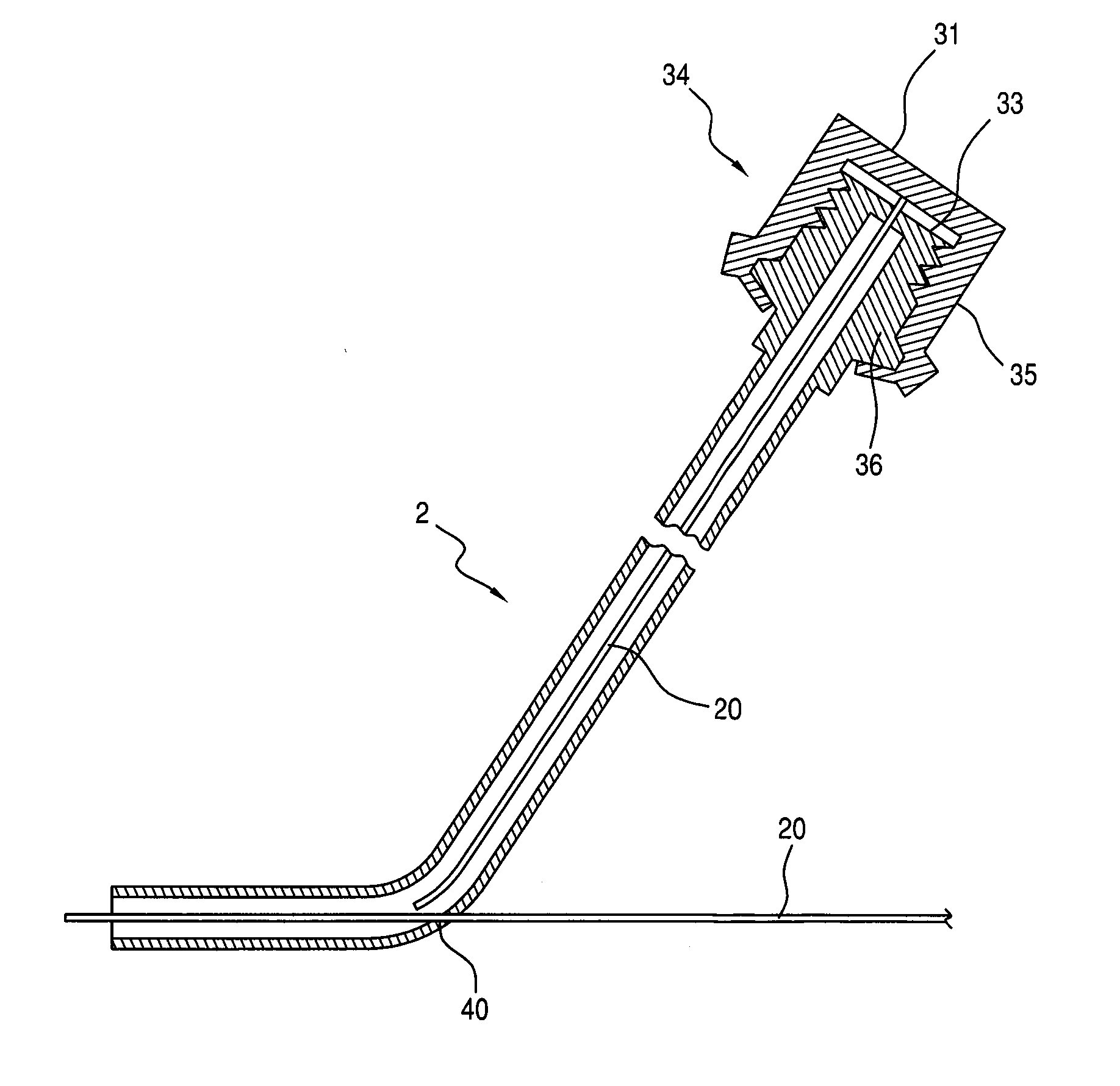Medical Device for Anchoring a Guidewire During a Percutaneous Coronary Intervention
a technology of guidewires and medical devices, which is applied in the direction of guide wires, catheters, etc., can solve the problems of not providing any support for advancing devices over portentous, affecting the safety of patients,
- Summary
- Abstract
- Description
- Claims
- Application Information
AI Technical Summary
Benefits of technology
Problems solved by technology
Method used
Image
Examples
Embodiment Construction
[0026]During percutaneous coronary interventions, the interventional cardiologist introduces a guide wire into the coronary artery past the diseased segment, and subsequently interventional devices such as dilation balloon and stents are advanced to the target location for therapy over the wire as a monorail system.
[0027]As the guide wire is floating free in the distal vessel it does not provide any support for advancing devices over a tortuous or angulated path in route to the target location. Few interventional techniques are used to facilitate device passage over resistant areas and no device is available to Applicant's knowledge to address this demanding challenge.
[0028]During percutaneous coronary interventions, as the proximal part of the guide wire is secured outside of the body, anchoring the guide wire in the distal vessel past the target location will add support for device delivery akin to a tight wire with both of its ends secure. However, in the present case the wire an...
PUM
 Login to View More
Login to View More Abstract
Description
Claims
Application Information
 Login to View More
Login to View More - R&D
- Intellectual Property
- Life Sciences
- Materials
- Tech Scout
- Unparalleled Data Quality
- Higher Quality Content
- 60% Fewer Hallucinations
Browse by: Latest US Patents, China's latest patents, Technical Efficacy Thesaurus, Application Domain, Technology Topic, Popular Technical Reports.
© 2025 PatSnap. All rights reserved.Legal|Privacy policy|Modern Slavery Act Transparency Statement|Sitemap|About US| Contact US: help@patsnap.com



